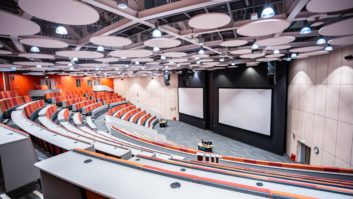The hospitality business encompasses a number of different areas, with the hotel, travel and food and beverage sectors sub-divided into smaller, individual markets. While categories such as boutique hotels, business class flights and fine dining have their own technology requirements, what is common to the sector as a whole is that development has been slow compared to other industries.
This disparity in technical advancement and the adoption of new technologies is confirmed by the 2022 HotelTechIndex Market Leaders Report, which notes that whereas the average business (employing fewer than 50 people) uses more than 40 software applications, hotels typically deploy approximately only 20. “Hospitality has probably been very far behind the curve when it comes to technology and it’s now rapidly trying to catch up with what other industries have been doing, for example airlines with self-service [check-in],” says Richard Oram, senior director of product enablement at Oracle Hospitality.
“The last three years have been chaotic but we’re seeing a complete shift in the way people approach how they’re going to manage their day-to-day operations within properties. And that goes from the small independent hotel groups right through to the big international chains. I don’t think anyone comes through this [the pandemic] unscathed and hasn’t re-evaluated how they going to do things.”
LEADING ORACLE
In the hospitality market, Oracle produces MICROS, a point of sale (POS) system used in hotels, casinos and on cruise ships, as well as the food and beverage sector. This latter area would appear to straightforwardly cover bars, restaurants and cafes but, as Tim Brown, vice president of global solution engineering for the Oracle Food and Beverage division, says, it encompasses approximately 13 sectors overall, although this has changed since Covid.
“Post pandemic – and probably coming into the recession – we’re now seeing some of these sectors are starting to morph together,” Brown says. “That’s very similar to what happened in the 2008 recession, where ‘fast casual’ [burgers and sandwiches] came out of ‘quick service’ and ‘casual dining’. Now, accelerated by the pandemic, we’re seeing operators looking at becoming a multichannel operation, moving from counter or table service to cover collection and delivery as well.”
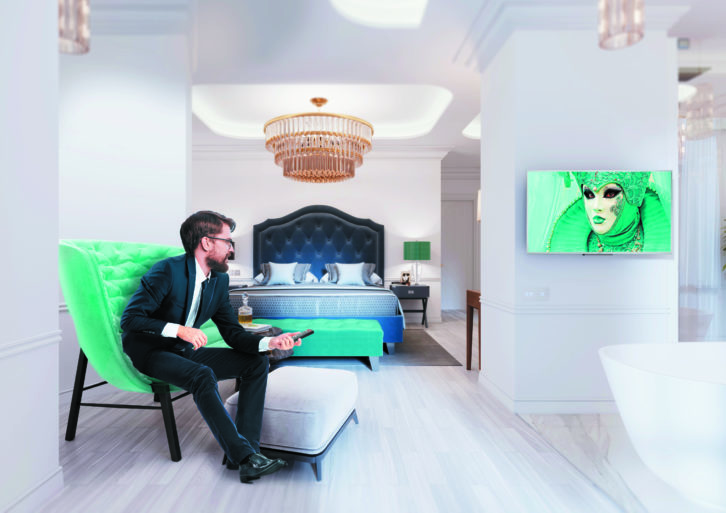 Having food delivered was not new idea but tended to be confined to certain types of cuisine, specifically Indian, Chinese and pizza. Ordering was usually over the phone, although some restaurants and takeaways had started to exploit email and online selection through websites pre-2020. But what had previously been a convenience for consumers and an additional service for businesses became an absolute necessity.
Having food delivered was not new idea but tended to be confined to certain types of cuisine, specifically Indian, Chinese and pizza. Ordering was usually over the phone, although some restaurants and takeaways had started to exploit email and online selection through websites pre-2020. But what had previously been a convenience for consumers and an additional service for businesses became an absolute necessity.
Ordering apps and contactless technologies, particularly for payment, came to the fore during the pandemic but are now the norm, not just for takeaway or delivered food but also booking tables and ordering on premises. “In the last five to ten years we saw, in somewhere like a McDonald’s or a Burger King, the shift from counterpoint to kiosks,” says Brown. “Now kiosks are reducing [in usage] because people are self-ordering. A good example of this is a Burger King in the Netherlands that used to have around 64 POS systems and now probably has four or five and the rest is all kiosk and/or mobile ordering apps. So we’re seeing the shift to a self-ordering methodology similar to what is being seen in hotels.”
James Harrison, director of Hotel Technology Consulting Services (HotelTCS) picks up on this, observing that wireless/remote access and contactless have “gone from nice to have to necessary”. Again driven by the pandemic, these are now to be found in the form of digital keys and contactless check-in, not just in the global hotel chains but smaller and boutique hotels as well.
ROOM KEYS
The big change has been to store digital room keys on smart phones, using the same technology that allows people to pay using their mobiles. This is now possible using Apple Wallet and apps available through Google Play. Richard Oram says the take-up of this is moving on “at tremendous speed” right now. “All the vendors that have traditionally done door locking, like VingCard and Zaplox, are now looking at how they can make the mobile provide keys,” he says. “It was starting at a few hotels before the pandemic but since then it’s really become the in thing. [People are asking] how much contactless can we use in
a property and how much can the guests do themselves. It’s becoming more of a requirement, especially at corporate hotels where the business traveller is expecting to do everything they would do, as with booking in for a flight.”
This sector has had to move on from what had previously been standard: guests having to go to the front desk to check in, which often involved queuing; then making their way to the room and unlocking the door with a swipe card (or an old fashioned physical key); and then only having traditional linear TV as in-room entertainment. The attitude to WiFi, which was often regarded as a way to make extra money out of the guests, has also had to change.
Harrison comments that WiFi “has always been” the number one technology requirement in hotel hospitality but adds that the days of charging for it are over. “Also, it’s no longer sufficient for WiFi that [only] allows basic streaming or email checking,” he says. “You must be able to stream content and hold Zoom conferences or not bother.”
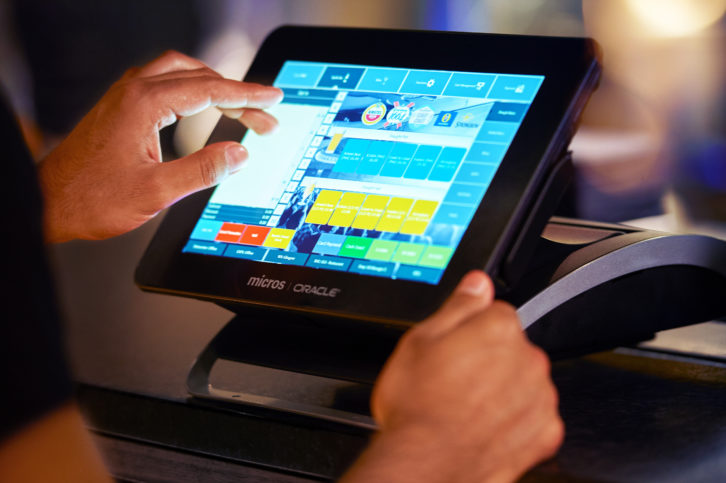 As for the ubiquitous screen in the corner of the room or on the wall, Harrison observes operators are trying to move with the times and not be inextricably tied to the ‘TV set’ model, even though there can still be an expectation on the part of the guest as to what should be provided.
As for the ubiquitous screen in the corner of the room or on the wall, Harrison observes operators are trying to move with the times and not be inextricably tied to the ‘TV set’ model, even though there can still be an expectation on the part of the guest as to what should be provided.
“This change is finally happening,” he observes. “It took some time and hotels still focus on having a quality TV in-room. I know of a hotel that opened without screens in rooms and after a few months ended up installing them as too many guests complained. That said, viewing habits have changed, with a move from linear TV channels to OTT delivery and content casting [connecting mobile devices to a hotel room so people can play their own selections]. Guests bring their own content, not always their own device. Changes are afoot and I think more guests are now just viewing tablets and other mobile devices.”
ENGAGEMENT OPPORTUNITIES
Hotel Tech Report’s Ultimate Guide to Hospitality Technology (2022) reports that “today’s guests want more than local cable channels”. Instead, people now expect more than “traditional TV”, with new generation systems providing “interactive content and entertainment for all types of hotels, plus additional marketing and engagement opportunities”. Among those providing this are the ZAFIRO cloud-based platform, SONIFI (delivering OTT streaming, interactivity, smart room integration and internet connectivity) and Moncierge, which produces Smart TV-based systems for hotels incorporating Apple TV for Hospitality.
Moncierge’s technology is a web-controlled management portal that can handle and update all kinds of content, including digital signage, interactive media, conference systems and in-room hospitality TV. All of these, explains Andrew Hale, vice president of design at Moncierge, can be standalone but are also able to work together. “What we’ve developed is a platform that enables hotels to communicate with their guests and create additional revenue as well as a better guest experience.”
Hale adds that while casting has given more flexibility and control over what people can watch, OTT is seen as preferable within the hospitality tech community. “A number of years ago there were a big debate between casting and streaming,” he comments. “A number of vendors are all in on the casting aspect [but] what we’ve found from our conversations in the industry is that casting is OK but streaming is really where people want to go. They want to be able to sign in on the TV itself and watch content, whether it’s Disney+ or Hulu or Netflix, and also shows that are on the TV itself. And part of the education [in using the technology] is knowing that at the end of your stay the whole TV is erased so if you did sign in, all of your personal information is gone.”
EASY STREAMING
Leading TV/display manufacturers are now building features such as security protocols and easy streaming access into their products. Among them is Philips Professional Display Solutions (PPDS), which has built Chromecast into its MediaSuite range. “This means the hotelier does not have to rely on additional hardware that may be easier to damage or lose,” comments international business manager for hospitality, Jeroen Vergaeghe. “It also gives the opportunity to offer access to streaming services, including Netflix, directly on the TV itself.”
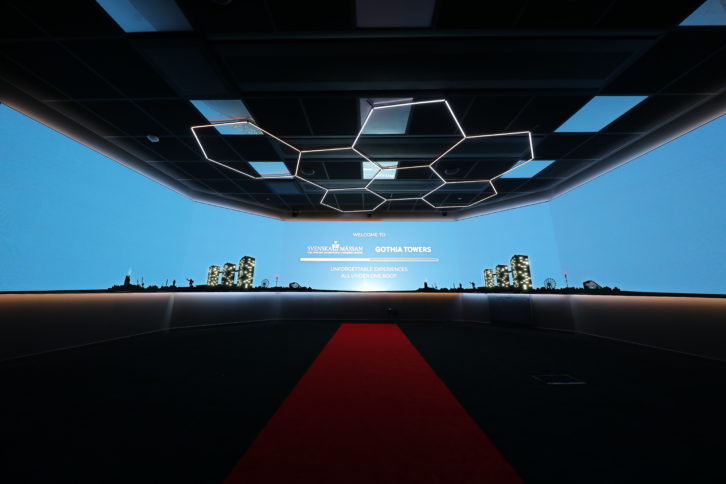 Vergaeghe says the main requirement expected of in-room entertainment systems today is to give guests “the joined-up, home-from-home experience that fits their unique wishes”. This, he adds, has brought about a range of different technology needs that have to be provided in hotel rooms, including Chromecast for sharing a guest’s content on the in-room TV. Despite this broadening of entertainment options for guests in their rooms, he acknowledges that one of the most familiar aspects of hotels has not gone away just yet.
Vergaeghe says the main requirement expected of in-room entertainment systems today is to give guests “the joined-up, home-from-home experience that fits their unique wishes”. This, he adds, has brought about a range of different technology needs that have to be provided in hotel rooms, including Chromecast for sharing a guest’s content on the in-room TV. Despite this broadening of entertainment options for guests in their rooms, he acknowledges that one of the most familiar aspects of hotels has not gone away just yet.
“The big screen remains the central point of entertainment within the hotel room and it can still be used for viewing ‘old fashioned’ content’,” Vergaeghe says. “Now, though, it needs to be able to complement that more traditional, linear content with streaming solutions, as well as offering on-board apps that enable guests to enjoy a comfortable lean-back experience, complemented with access to all their usual pastime apps. Offering access to the Google Play store allows guests to choose from a plethora of apps – from films, TV and music through to gaming and health and well being.”
LINEAR DROP
PPDS reports that on MediaSuite TVs, where Netflix and Chromecast are offered as standard, viewing of linear channels drops by approximately 50 percent. This change in viewing habits is recognised on a personal level by Martin Bodley, director and global head of Bose Work at Bose Professional: “Hotels are kind of slow moving from a technology standpoint but more and more people want their own content so [interconnectivity] is going to have to happen. When I get to a hotel room, I want to be able to just easily get on my Netflix account and continue watching the stuff that I’ve been watching. I can just walk in and access my meeting calendar, my media, my shows and put it up on screen. That’s not happening at a lot of hotels but it is happening at some.”
Bose Professional produces a range of videobars, which are used in hotel videoconference facilities as well as offices, but is known primarily for its audio systems. “We’re entrenched in sound reinforcement and music systems in lobbies and other areas for hospitality,” Bodley says. “But as we see people looking to work from anywhere, we’re thinking about how to modify these spaces so they’re not just a music system. We need it to break out and do video conferencing or have internet connectivity and maybe provide information to people in a contextual way when they’re in those spaces.”
Bodley comments that Bose Professional “has not done a lot in the room” with audio systems but does feel there is “certainly an opportunity” for devices that could make it easier to communicate with people within their rooms. “Topics that are very popular are directional audio and personalisation using AI, delivering information [directly] to people that you wouldn’t want to deliver over a PA system,” he says. “This idea of directional, compartmentalised audio is up and coming and will become more prevalent.”
POWERFUL CAPABILITIES
While such installations have not yet been fully realised, some elements of this concept can be seen at the recently completed Fairmont Windsor Park Hotel just outside London. The brief from the owner, Arora Group, was to use technology “to bring guests powerful capabilities, not just in their rooms but in meeting spaces, gathering points and more.” To achieve this, hospitality consultancy Hoist Group specified Bose Professional audio systems for the hotel’s spas, restaurants and meeting rooms, as well as guest rooms where loudspeakers in the bathroom are connected to the in-room TV.
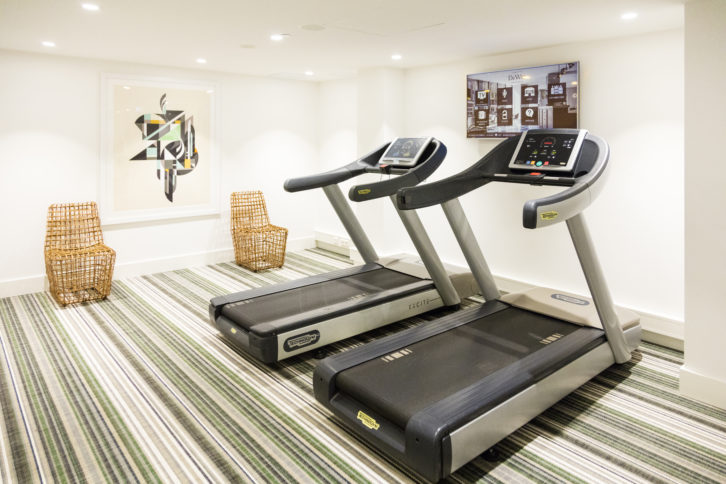 Hotels have long offered business facilities alongside the guest and leisure accommodation. These two sides were usually kept separate but hospitality technology providers are now seeing that divide softening. “Hybrid spaces are fast becoming ‘the norm’ within the sector,” comments Jessica Golding, European brand and marketing director at LED display manufacturer Absen. “More hotels, especially in business districts around the world, offer guests the option of using their own conference rooms within the hotel complex, which can be used for whatever the guests’ requirements are.” Golding adds that this approach has been taken at the Gothia Towers in Gothenburg, Sweden, which now features an 180-degree panoramic Acclaim series A2715 Pro display.
Hotels have long offered business facilities alongside the guest and leisure accommodation. These two sides were usually kept separate but hospitality technology providers are now seeing that divide softening. “Hybrid spaces are fast becoming ‘the norm’ within the sector,” comments Jessica Golding, European brand and marketing director at LED display manufacturer Absen. “More hotels, especially in business districts around the world, offer guests the option of using their own conference rooms within the hotel complex, which can be used for whatever the guests’ requirements are.” Golding adds that this approach has been taken at the Gothia Towers in Gothenburg, Sweden, which now features an 180-degree panoramic Acclaim series A2715 Pro display.
Technology has taken its time to make a full impact on the hospitality sector. It has always been there but, due to a number of factors – including Covid – it is now bringing significant change. For the future, James Harrison at HotelTCS sees the focus being on how technology can help improve the personalised experience, giving greater contact with the guest through digital touch points such as digital concierge.
MAJOR ROLE
For restaurants and bars, Oracle’s Tim Brown concludes that the cloud will play a major role, moving the POS model to a points-of-transaction approach. “As technologists we are working on taking that transaction platform and housing it in the cloud, providing the security needed today in a restaurant or hotel because we’re dealing with sensitive customer data,” he says. “Even though it’s in the cloud, [everything] is accessible 24/7 wherever you are in the world. POS becomes point of service and the user can see the data as if it was on premise.”
The increased use of technology in hospitality might appear to work against what the sector is all about in terms of offering personal service. While there does appear to still be an expectation of dealing with staff in the old fashioned way from some hotel guests and diners, the new ways have the potential to provide a one-to-one service while making everyone’s lives easier.





